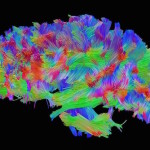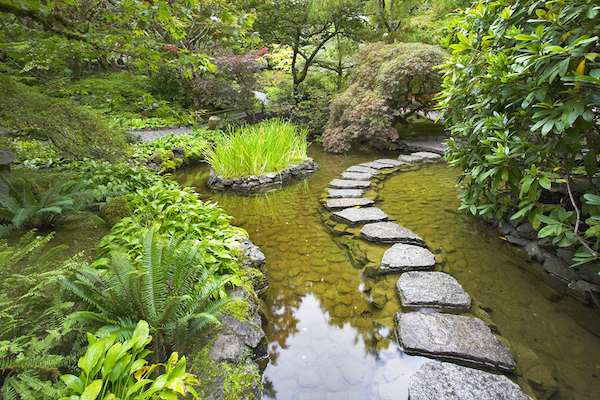The holiday season is here and you are likely getting very busy. Here is your one simple, natural and free treat to soothe you between appointments. Before I tell you what it is, allow me to tell you what it does for you.
This will:
- Reduce your stress, increase your concentration and will power.
- Develop your inner calm, your compassion, and change your interaction with others.
Could that help with your boss who does not realize that allowing you some private life over the holidays could be his one good deed of the year? Or at some family gathering, when you finally make it – after running all over the city and scouring the internet to arrive with gifts for everyone?
You don’t come to me just for your peace of mind, do you? So this treat will work for your overall body health as well.
It will also:
- Decrease physical pain and blood pressure.
- Slow your aging process.
- Boost your lung capacity and your immune system.
By the way, it’s natural, free and has no side effects. Will you give it a shot?
It’s older than Santa Claus but the comparison stops here. Science comes with more studies about it every day, to prove and explain the reality of long time claimed benefits — It’s called Meditation.
Meditation is an age-old human practice that could date as far back as prehistory. It is first mentioned in Vedic texts circa 2600BC. In recent studies, the picture is getting clearer how meditation helps manage inflammatory diseases like rheumatoid arthritis or high blood pressure and reduce the level of cortisol, a key factor in every condition worsened by stress — which might as well be all conditions.
In meditation, I can let go of everything.
I’m not Hugh Jackman. I’m not a dad. I’m not a husband.
I’m just dipping into that powerful source that creates everything.
I take a little bath in it.
Hugh Jackman
Meditation changes whom you become.
This is not the latest buzz from an obscure new-agey guru, but the finding of the Benson-Henry Institute for Mind/Body Medicine at Massachusetts General Hospital and Beth Israel Deaconess Medical Center. After observing 22,000 genes before and after eliciting the relaxation response, they found that the expression of certain genes changes with meditation. Some genes were turned on — genes associated with metabolism, energy creation, insulin secretion and even some that enable the creation of a protein to support the longevity of the gene themselves, i.e. genes that slow down the aging process. Amazingly, the expression of other genes — namely genes linked to the inflammatory response and stress – related pathways — was reduced. Simply by sitting in meditation, your DNA will reorganize itself for your best interest.
Meditation is good for your wallet!
A 14 years study from the government of Quebec on the 10% biggest healthcare spenders, showed that while the control group continued to spend as much money with their doctor, the group practicing meditation saved 28% after five years of meditation. In this period of heated debate over health care, could meditation be part of the solution?
Life is available only in the present moment.
Thich Nhat Hanh
How much is too little?
Without much surprise, studies and experienced mediators agree: the more you meditate, the stronger the benefits.
What’s new, however, is that, according to a study published in the Journal of Neuroscience, the reduction of physical pain can start with as little as four meditation sessions of 20 minutes. According to Fadel Zeidan, Ph.D., who directed the study, “We found a big effect – about a 40 percent reduction in pain intensity and a 57 percent reduction in pain unpleasantness. Meditation produced a greater reduction in pain than even morphine or other pain-relieving drugs, which typically reduce pain ratings by about 25 percent.” He continues, “Not only did the meditation subjects feel less pain than the control group while meditating but they also experienced less pain sensitivity while not meditating.” With meditation, it’s never too little or too late. As little as 10 to 30 minutes a day is all you need to see its powerful benefits.
Disclaimer.
Meditation is a time tested natural technique, part of most traditional medicines and mostly without side effects. As with any good thing, it is possible to abuse it without supervision. Meditation is also not recommended for a person with full-blown depression or psychotic tendencies. In these rare cases, side effects are possible and they usually cease when the practice is interrupted.
.
10 steps to a successful meditation practice.
1. Pick a why.
Anytime you want to implement a new habit, choose a strong “why” relevant to you, whether it’s a spiritual reason – after all it’s holiday season! – or very personal and down to earth: let me see if I can get less or no cold this winter.
2. Commit 100%.
100% is easier. Do you partially perform tooth brushing, or showering? Don’t tempt yourself, 100% is easier than 99%. Just do it!
.
3. Take a break.
Stretch and take three deep breaths or successively contract then relax each muscle group before starting meditation to help you close whatever you were doing before and come back to your body.
The act of meditation is being spacious.
Sogyal Rinpoche
4. Sit with dignity.
Don’t slump but also don’t be too stiff. Sit on a pillow with both knee planted on the floor or on a chair with your hands on your lap, palms face up or down. Sit with dignity: laying down makes it more difficult to stay awake, especially if you did not read last month’s entry on this blog and are still sleep deprived. 
5. Pick an anchor.
Bring your mind back to this anchor each time it wanders.
Possible anchors include:
- Your breath, feeling your belly rise and fall or the air entering then leaving your lungs.
- A mantra.
- A prayer.
- Counting forward or backwards.
Meditation is not about thinking or about your anchor. It’s about observing your thoughts, emotions or sensations while you attend to the anchor.
Meditation is not a way of making your mind quiet.
It’s a way of entering into the quiet that’s already there
– buried under the 50,000 thoughts the average person thinks every day.
Deepak Chopra
6. Look at your thoughts like clouds passing in the sky.
Your mind will wander. Don’t be upset, judge or feel incompetent at meditating. Even with time you will not stop your thoughts, this is the nature of our brain and our ego. Simply notice. Acknowledge the content of your thoughts – without pushing it back or grasping at it – and very gently bring your attention back to your anchor. Bringing your attention back is the practice, just as in practicing sport or an instrument. You are developing a skill that you will use in your daily life when you need calm, focus and willpower instead of a habitual annoyed response as when somebody cuts you off, for example. Notice it and very gently bring your attention back.
7. It’s about your life outside of meditation.
Don’t look for an amazing experience and mind-blowing insights, even though they could happen in time. Allow your practice to change gradually the person you are in life, perhaps by making you more compassionate – I will come back on this in a future newsletter – or becoming somebody with a strong immune system who is rarely sick.
8. Blissipline.
I love this word. Not so long ago, Westerners would take a bath a week and their personal hygiene was not very developed. Now we know better. However, we still wake up cranky or anxious about the day ahead and we go out in the world and share ourself with others in that agitated state. Blissipline is the art of starting your day with a clean frame of mind. Take care of yourself in a way that will inspire and support you through the rest of the day. Meditate.
9. Meditation is about … doing meditation.
You get up, shower and brush your teeth pretty automatically, right? You don’t fret about it, speak of it all day long or judge it. Just do it! Meditate. Brush your brain, as Hebert Benson would put it.
10. Make all your life a meditation.
Any simple activity of your life can be your anchor: walking, washing dishes, grocery shopping… It’s not about the anchor it’s about awareness. When you get distracted from the present moment, notice your thoughts, emotions and sensations and bring your attention back to your anchor.
If you truly get in touch with a piece of carrot,
you get in touch with the soil, the rain, the sunshine.
You get in touch with Mother Earth and eating in such a way,
you feel in touch with true life, your roots, and that is meditation.
If we chew every morsel of our food in that way
we become grateful and when you are grateful, you are happy.
Thich Nhat Hanh
Meditation allows you to develop the observer. Were you aware of how many thoughts you have at all times? Were you aware of which thoughts run time and time again?
During your daily activity, are you able to step between the stimulus and your habitual response to choose a more empowered course for your life? Which one do you choose now that you meditate?
For example, is it: I am anxious, let me have yet another candy bar, cigarette, drink etc.? Or is it now: I am anxious, I notice it, let go of the worry and bring my attention back in the moment? This emotion, too, will pass.
Now that the observer is getting its power training in you, are you aware of what is in the gap between your thoughts? I will let you experience this one on your own and will be back on the subject. Until then, drop through the layers and surrender in blissful stillness. Good health and wellbeing are on the way.
Reading makes a full man,
meditation a profound man,
discourse a clear man.
Benjamin Franklin
CranioSacral Therapy, Somato Emotional Release and Visceral Manipulation in New York.




Leave a Reply